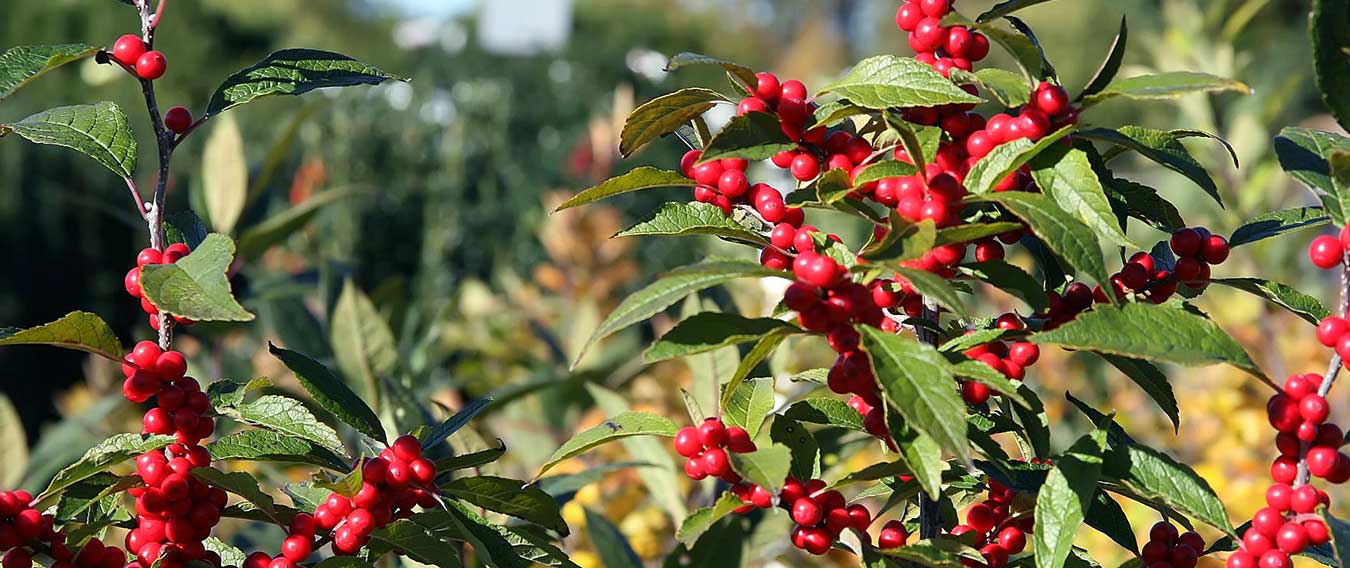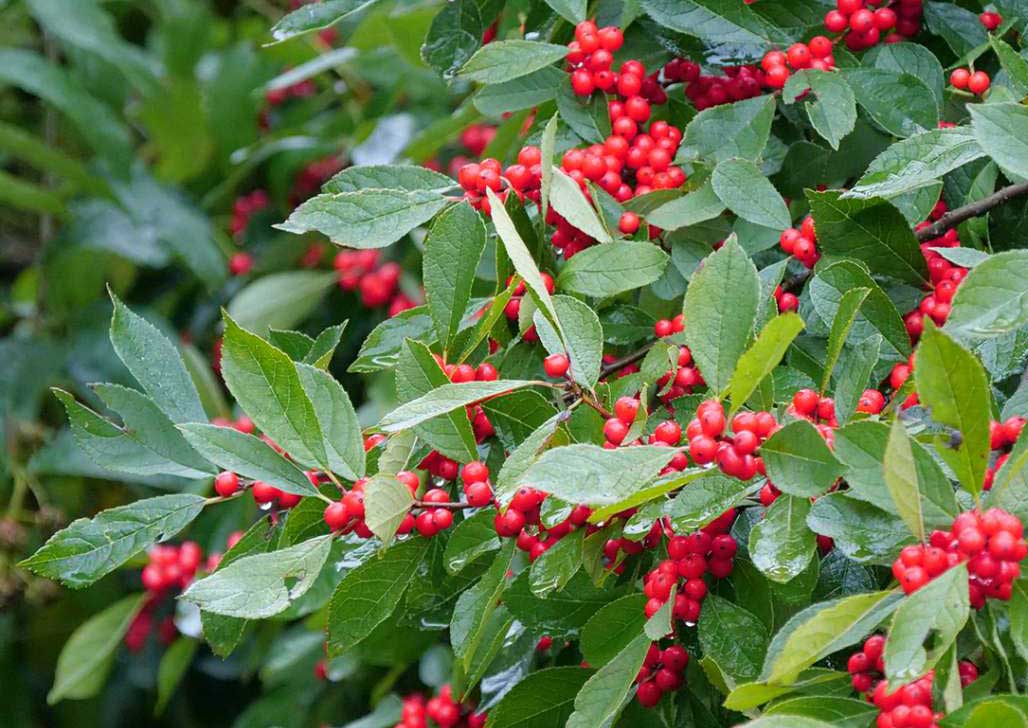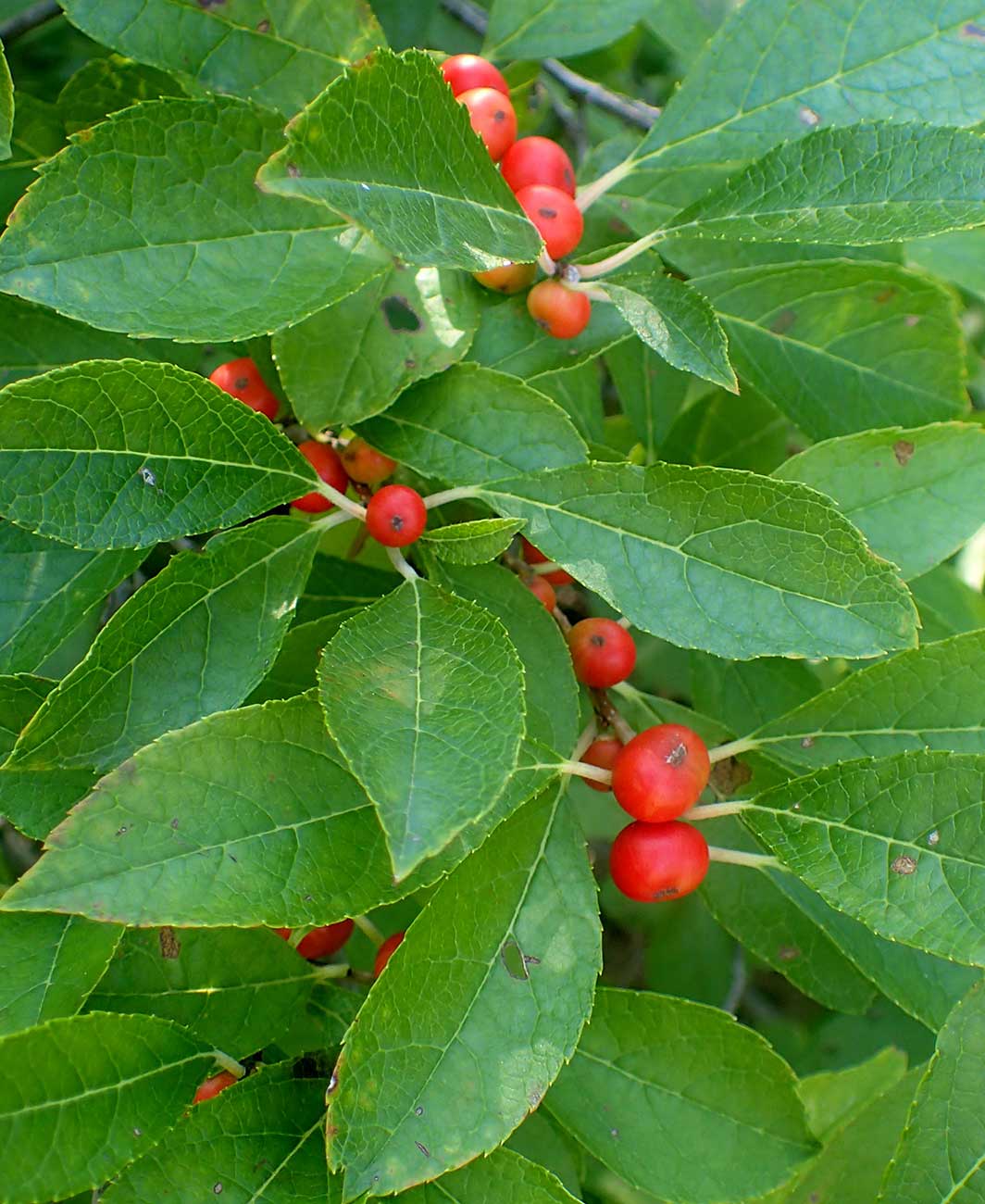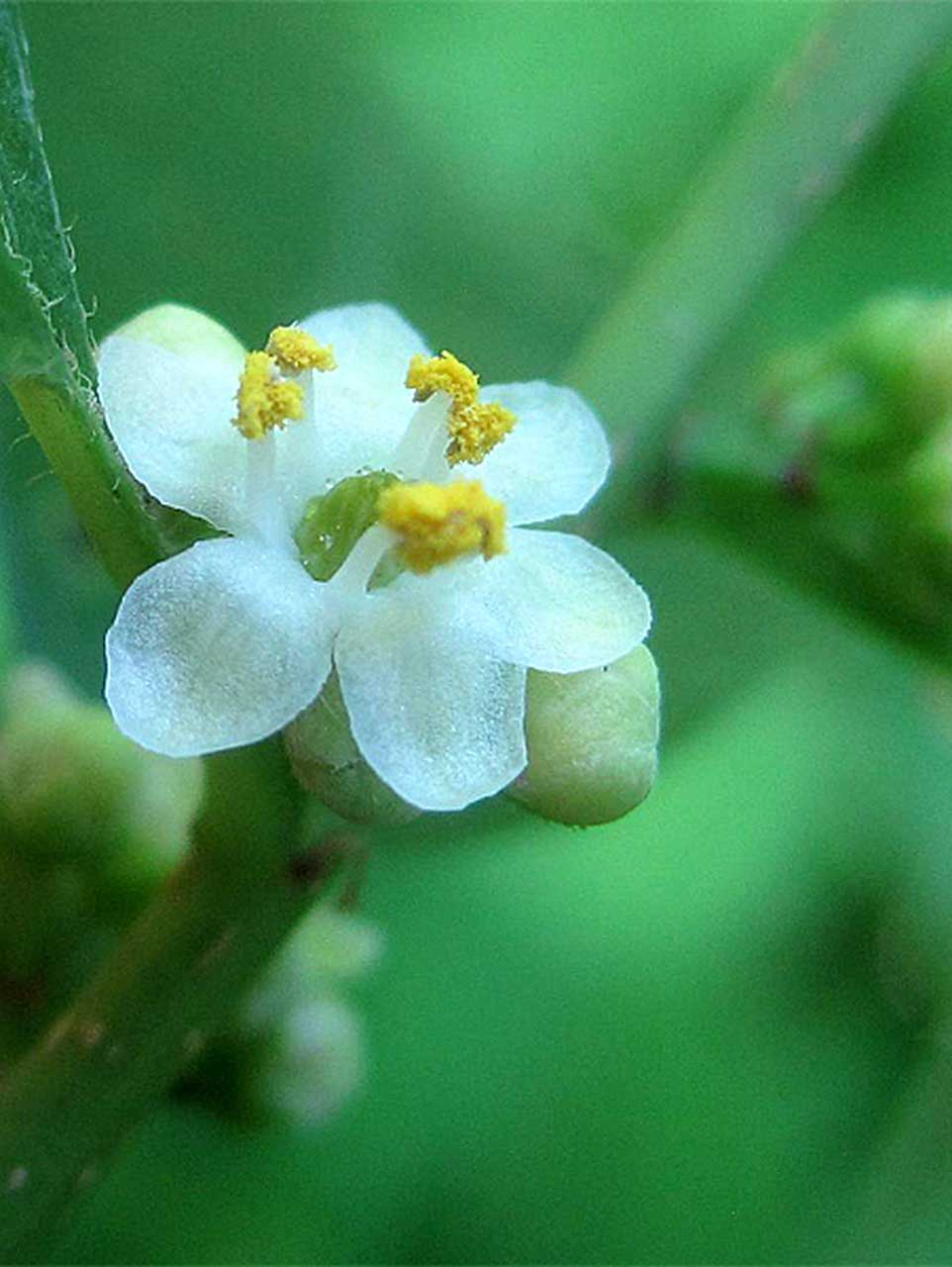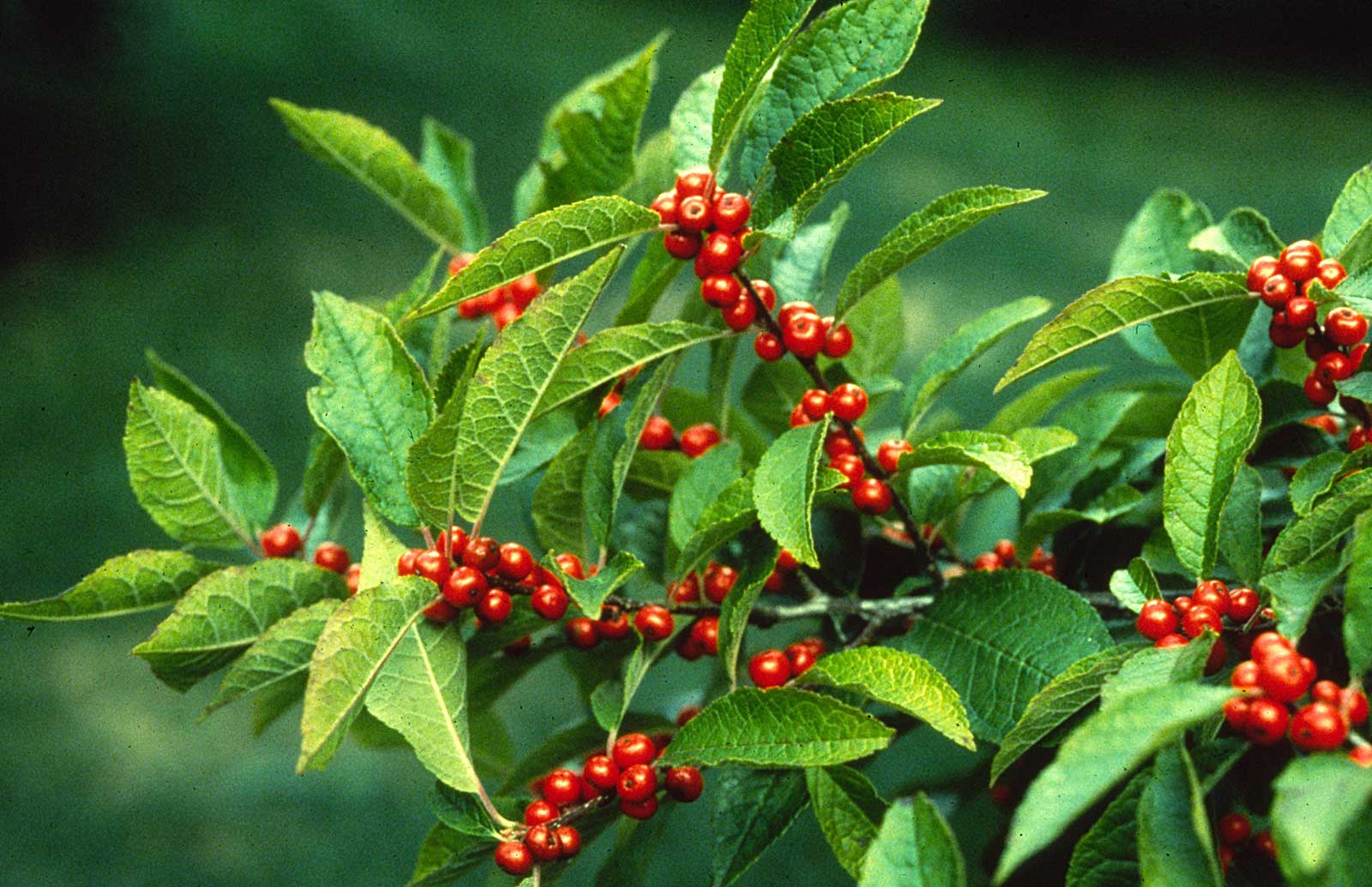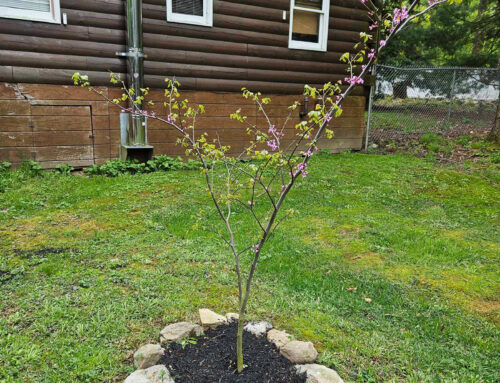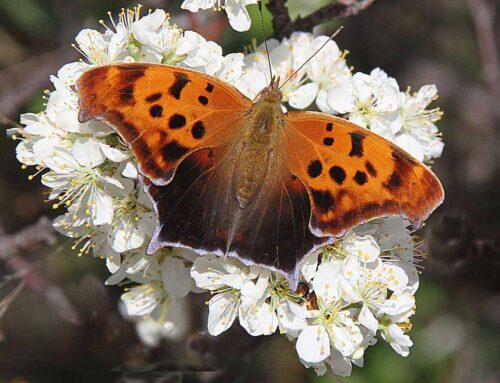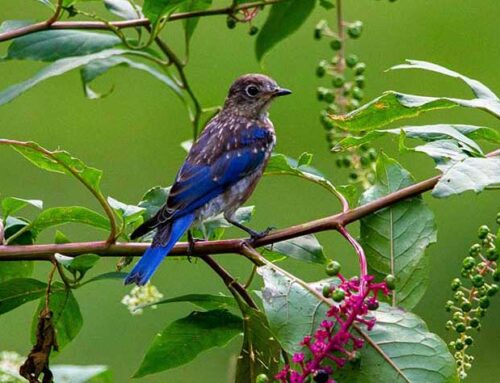“The most important role played by Winterberry is as a fall and winter food source for songbirds: the fleshy, bright red berries of this shrub are an excellent source of sustenance for fruit-eating birds such as robins, catbirds, mockingbirds, Eastern Bluebirds, and Cedar Waxwings to name a few.”
Sustainable Landscaping with Native Plants
Winterberry (Ilex verticillata), a deciduous holly shrub with a height of approximately 6 ft to 15 ft and is native to the eastern U.S. A good choice for any addition to the landscape, as it produces tiny white flowers that bloom in June. In the fall, the leaves turn a lovely burgundy and give way to red berries that brightly decorate the bare branches in the winter.  Not only do the bright berries add important color to winter landscapes, but they also lure in colorful birds that love to feed on the prolific red berries.
Not only do the bright berries add important color to winter landscapes, but they also lure in colorful birds that love to feed on the prolific red berries.
It is a favorite of many bird species including American Robin, Hermit Thrush, Eastern Bluebird, White-throated Sparrow and Yellow-bellied Sapsucker. Another noteworthy attribute of this native plant is its benefit to bees and other pollinators, providing not only nectar, pollen and fruit but also much-needed cover for a diversity of wildlife species.
Ilex Winterberry is a deciduous shrub. As such, being deciduous allows the profusion of red berries to come to the forefront as winter arrives, therein allowing one’s attention to be drawn to the plant’s fruit, with little foliage to obstruct the viewer’s vision.
Trees and shrubs are high value plants in the landscape, providing not only nectar, pollen and fruit but also much-needed cover for a diversity of wildlife species. Mass or group in shrub borders, foundations, native plant areas or bird gardens.
Family: Aquifoliaceae
Native Range: Eastern North America
Tolerate: Erosion, Clay Soil, Wet Soil, Air Pollution
Sun: Full sun to part shade
Zone: 3 to 9
Maintenance: Low
Water: Medium to wet
Fruit: Bright Red Berries
Bloom Time: June to July
Bloom Description: Greenish-White
At Lincoln Landscaping cultivating the environment is our life and livelihood. It is our number one goal to help our clients create and maintain beautiful landscapes while reducing the impact on the environment. Whether you are interested in a pollinator landscape garden design and build or other landscaping or property management project; we can create for you an environmentally friendly, organic and beautiful property.
Lincoln Landscaping “The Natural Choice”
Mike Kolenut President & CEO
https://lincolnlandscapinginc.com
(201) 848-9699

